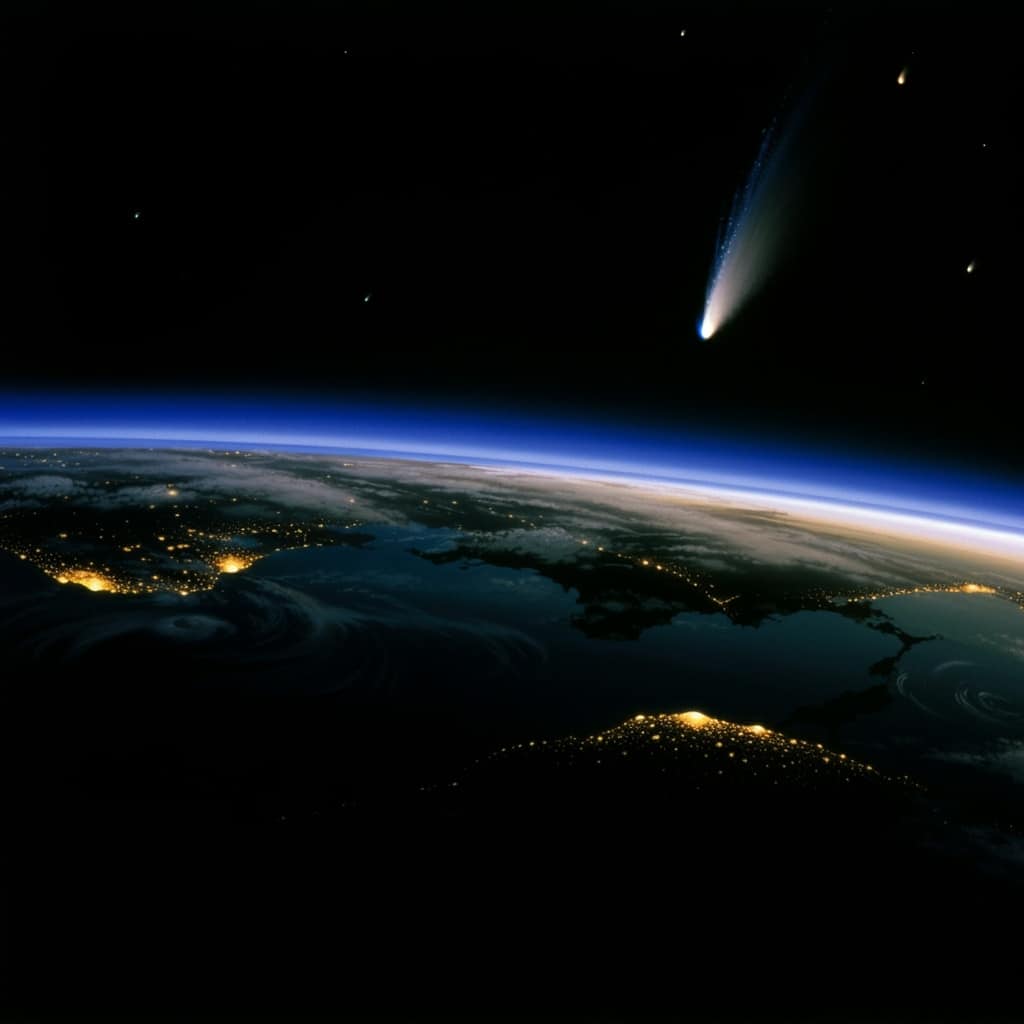It was last witnessed by some of the first humans to venture out of Africa 80,000 years ago. Now, comet C/2023 A3 – also known as Tsuchinshan-ATLAS – is finally making its return journey to Earth.
The comet, which will look like a faint star-like blob with a hazy tail, should be viewable just before dawn on four consecutive mornings, from Friday to Monday.
Comet C/2023 A3 was only discovered early last year, but based on its orbital trajectory scientists estimate that it last passed Earth 80,000 years ago.
NASA astronaut Matthew Dominick, who is currently aboard the International Space Station, posted a stunning clip of the comet from his unique vantage point.
The eight-second time-lapse video clip shows the celestial object from the space station’s cupola windows.
‘This comet is going to make for some really cool images as it gets closer to the sun,’ Dominick said in his X post.
Stuart Atkinson, a space enthusiast and amateur astronomer based in Cumbria, said the comet will look like ‘a fuzzy star with a misty tail’.
‘It will be beneath the moon, very low in the east,’ he said in an X post.
Although it should be seen with the naked eye on both hemispheres, there’s no harm having a pair of binoculars handy to increase visibility.
According to The Sky Live, comet C/2023 A3 is 157.1 million miles away from Earth, as of 12:00 BST Tuesday.
It is getting closer to us all the time, travelling at about 70km per second (150,000 miles per hour).
It will reach ‘perihelion’ – its closest point to the sun in its 80,000 year orbit – on Friday, September 27.
Perihelion is when a comet is at its brightest and therefore most visible for Earthlings.
The comet should also be visible on Saturday, Sunday and Monday mornings, although its position in relation to the moon will change slightly.
The best time to see it on these days is around 40 minutes before dawn, when it’s yet to be obscured by the sun’s glare.
In the UK, 40 minutes before dawn is around 06:15 BST, meaning some








